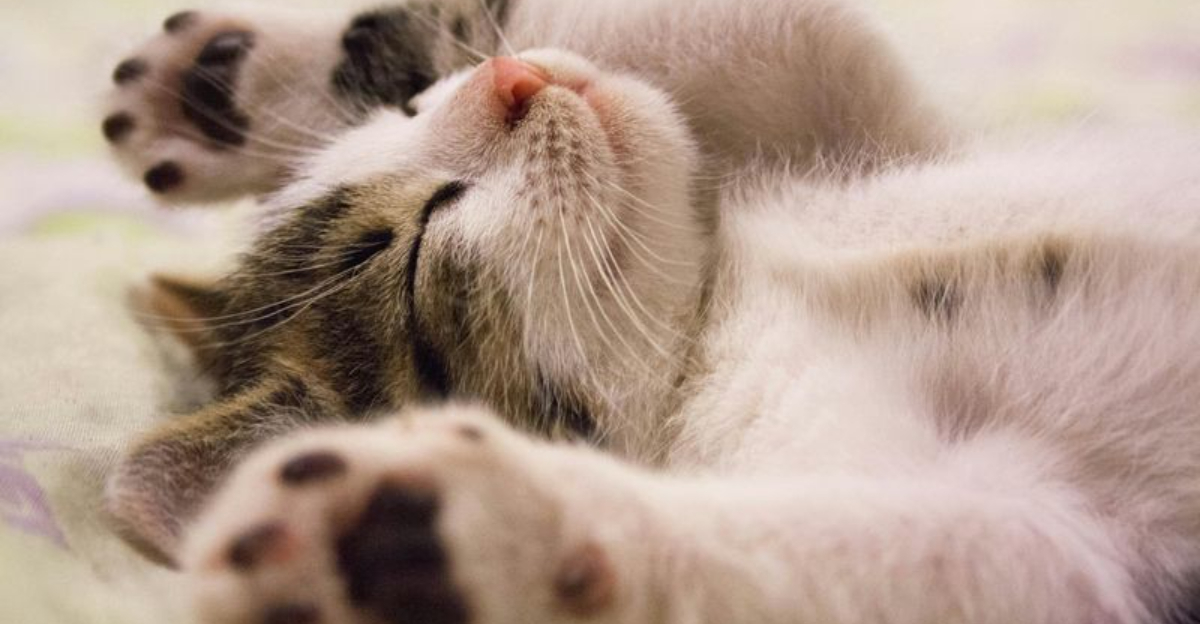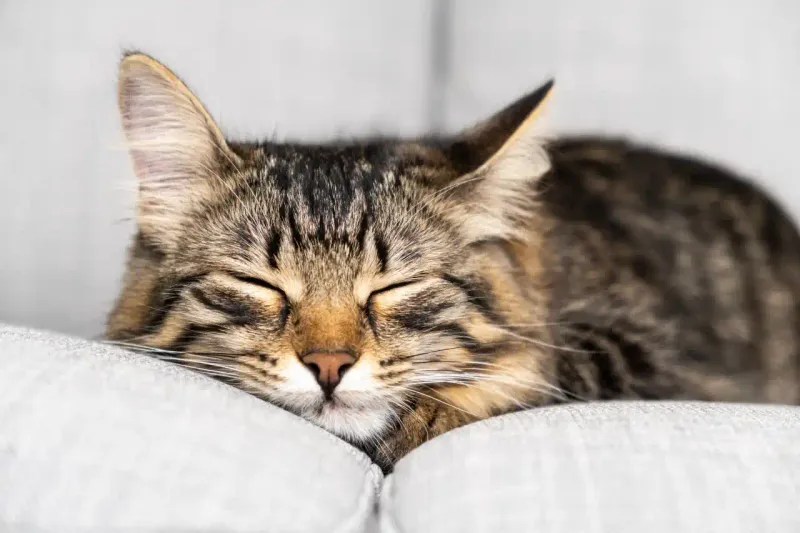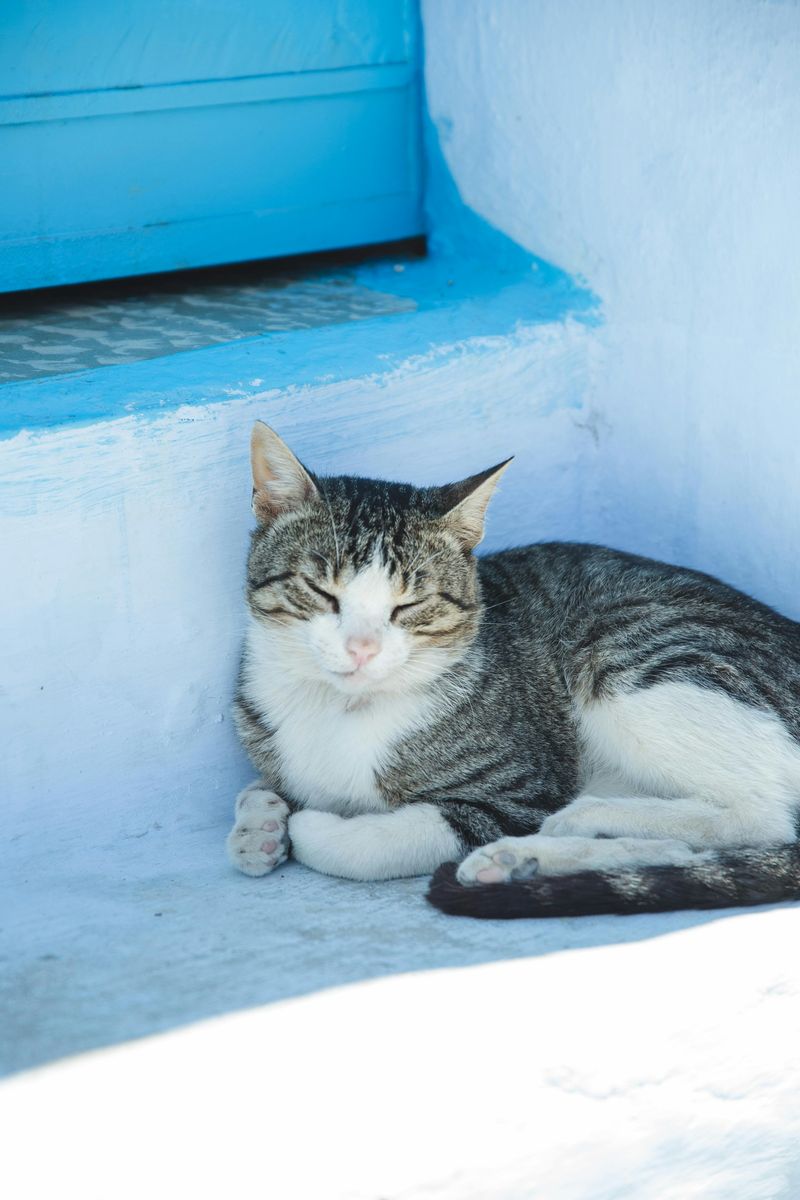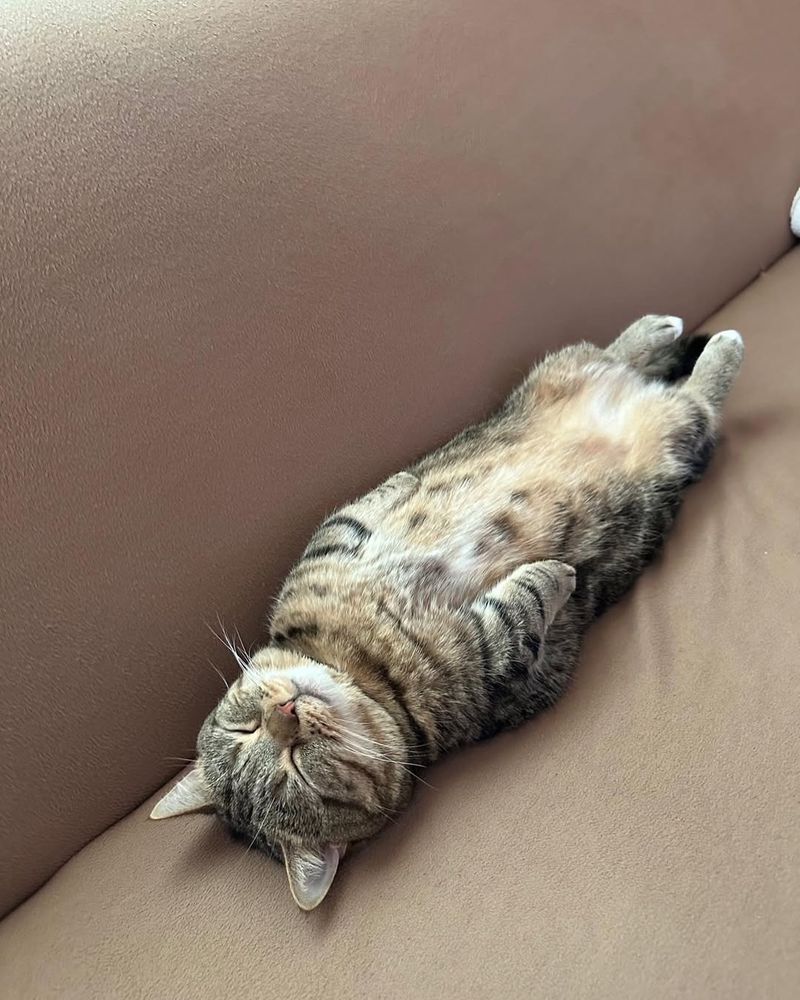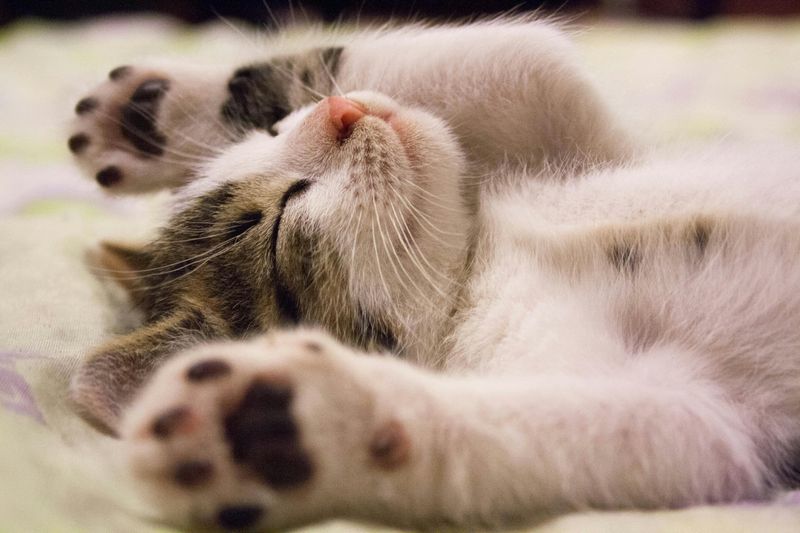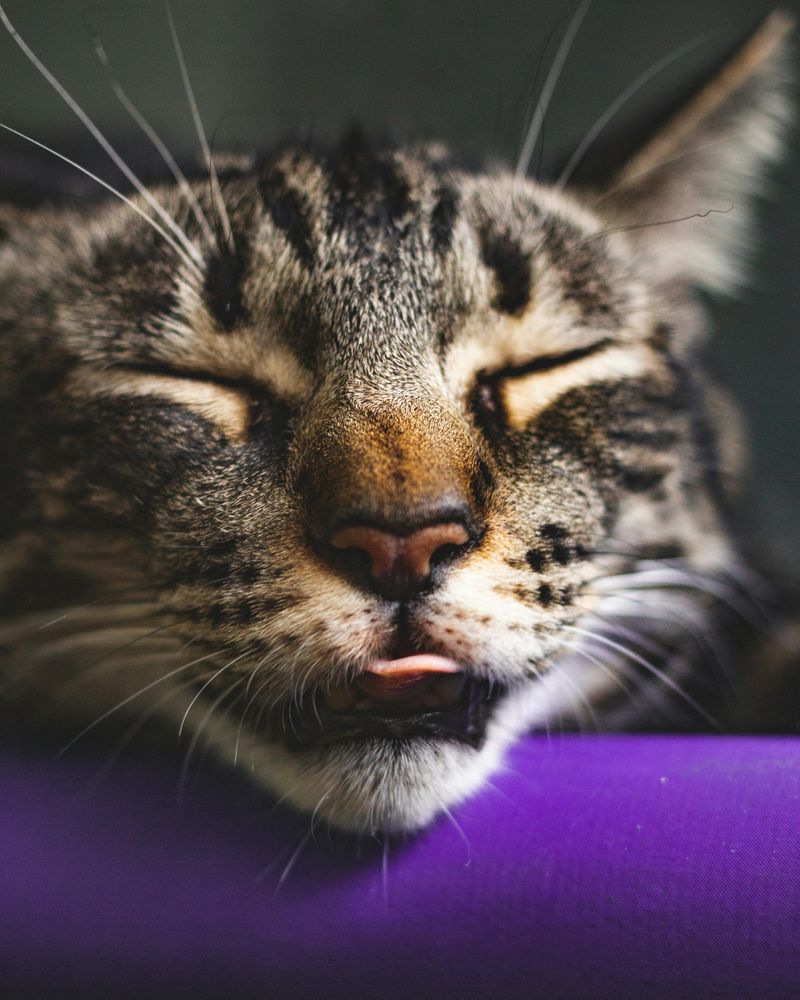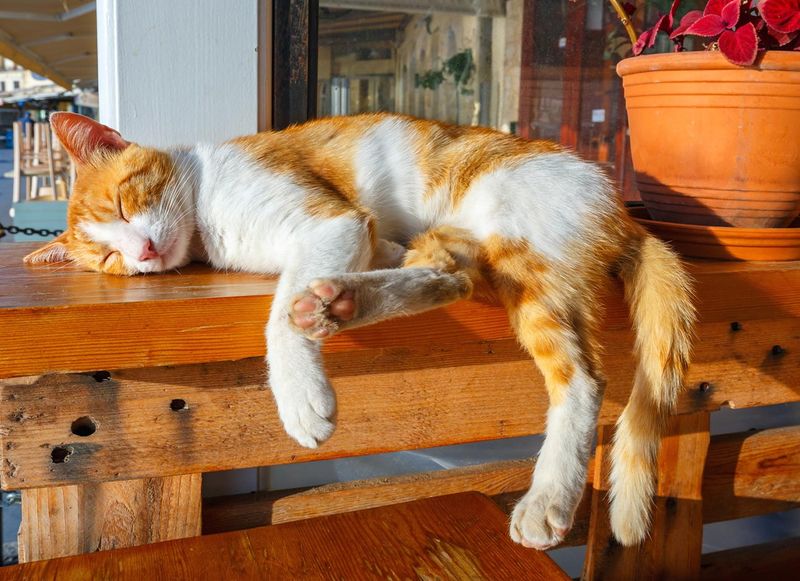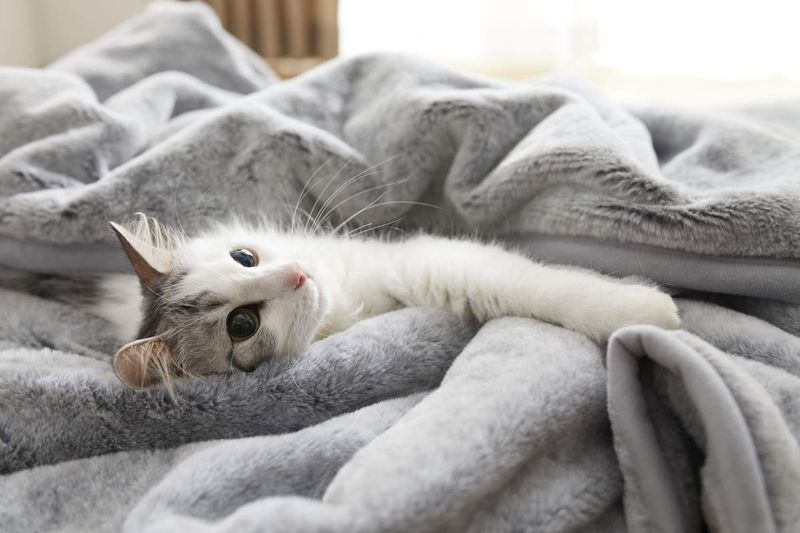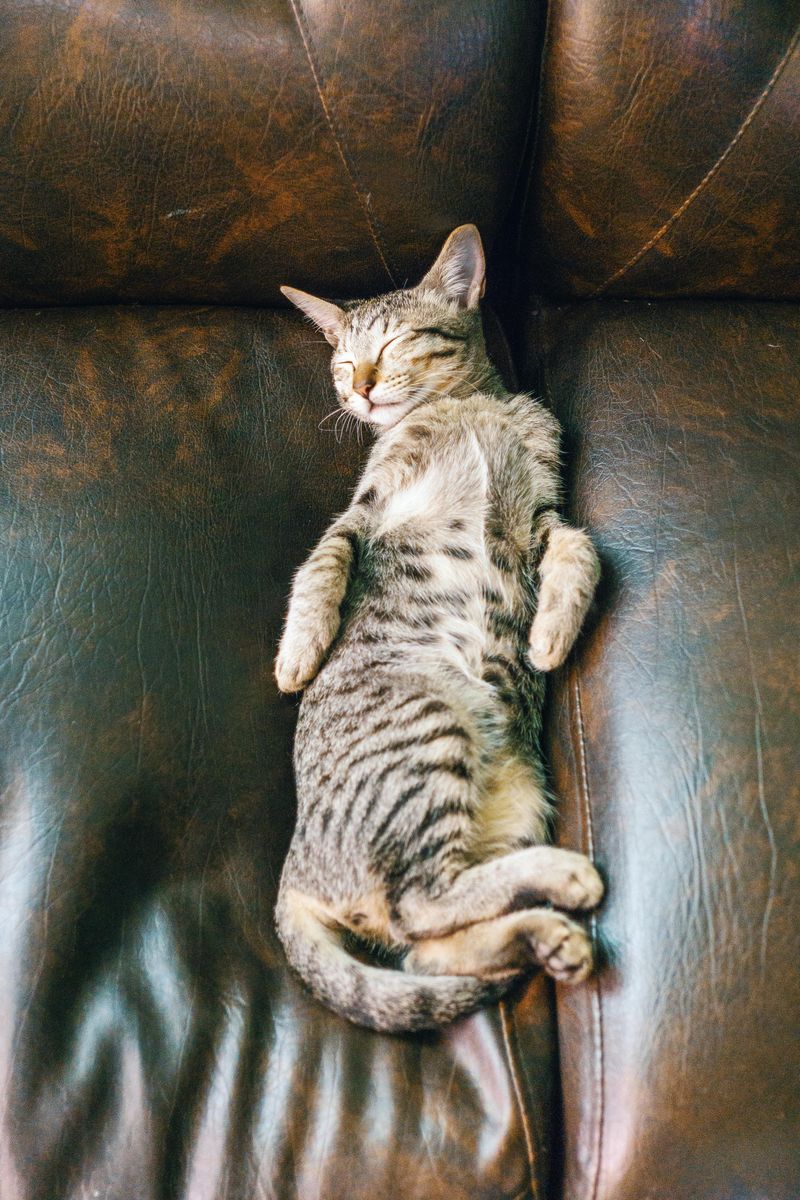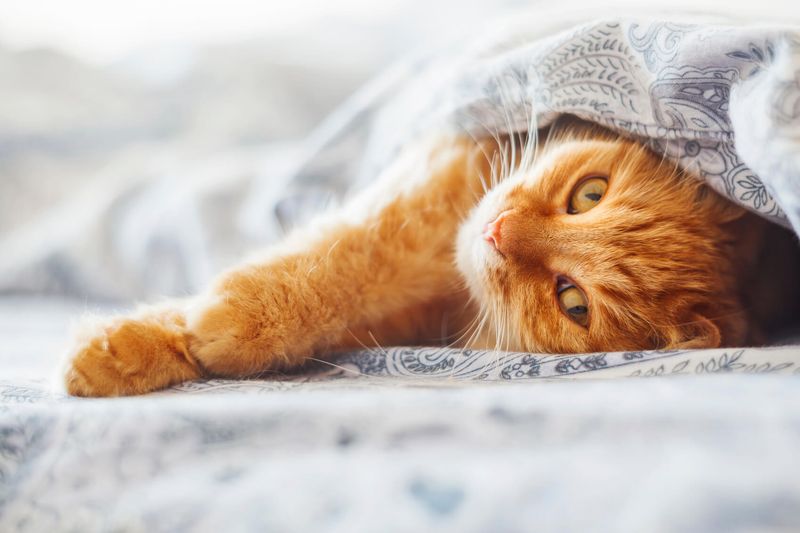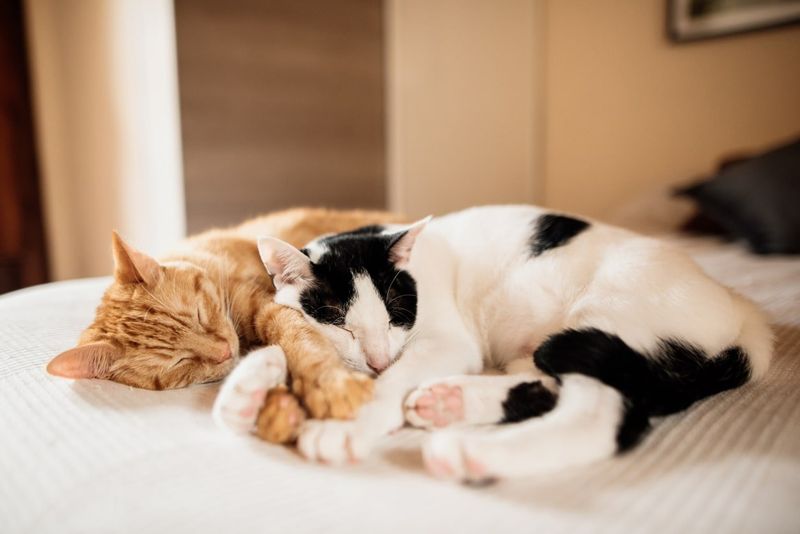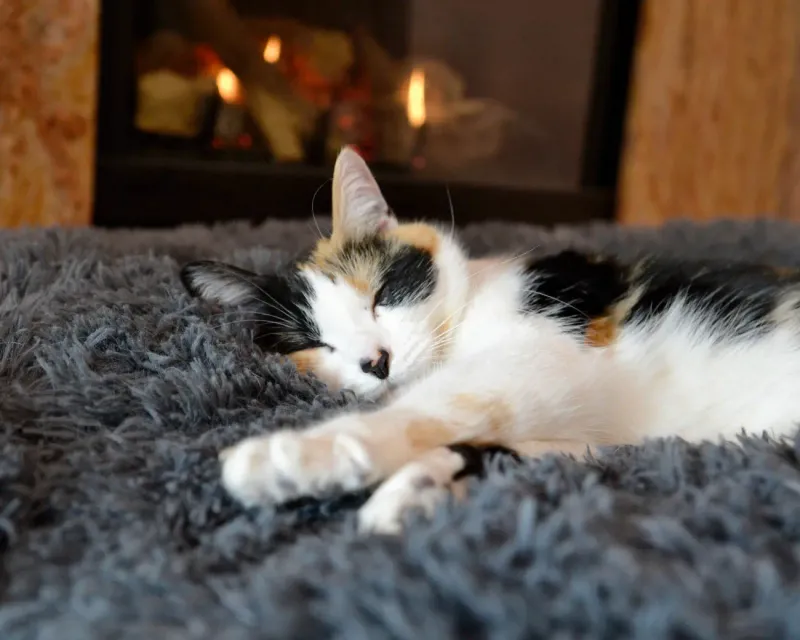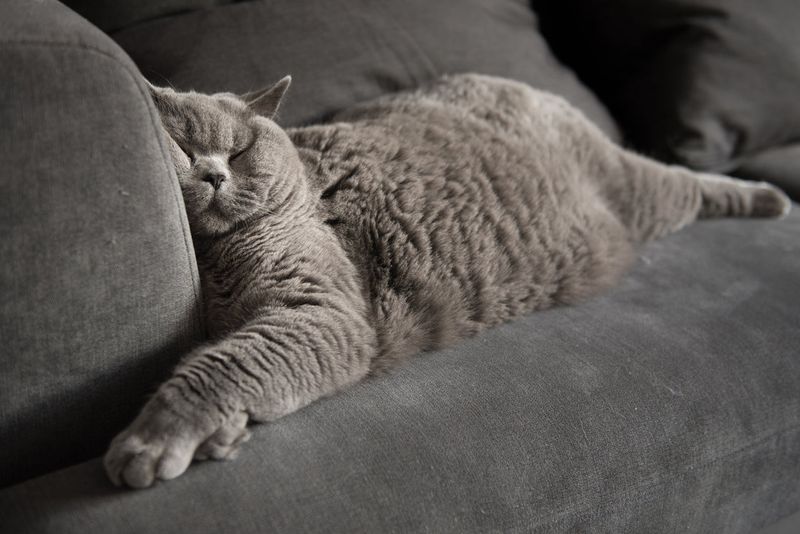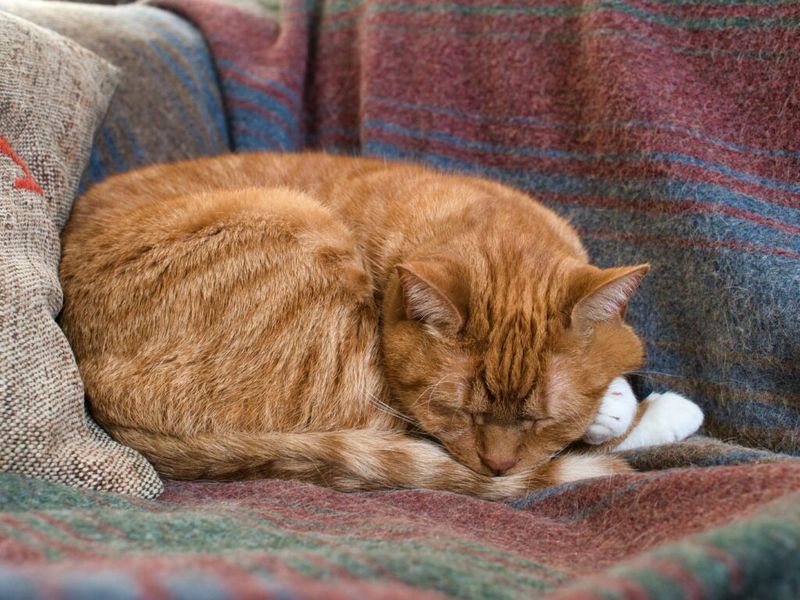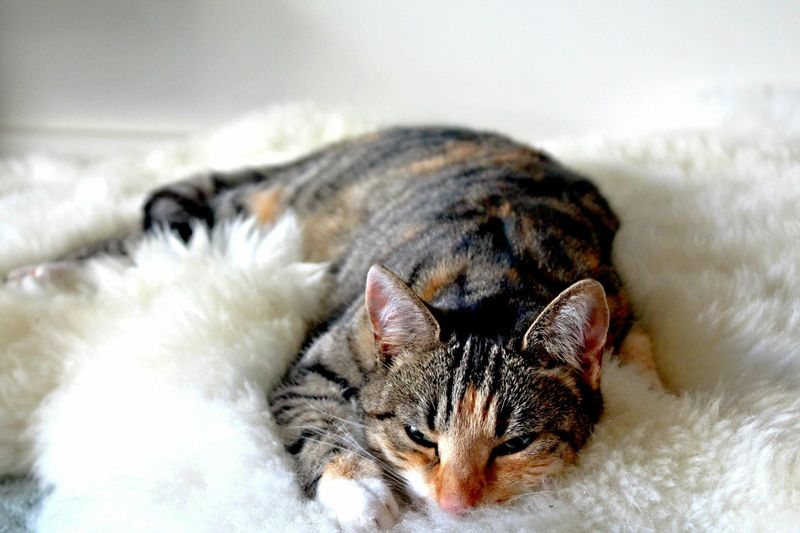📖 Table of Content:
- 1. To Observe Without Being Noticed
- 2. Avoiding Interaction
- 3. Testing Their Territory
- 4. Keeping an Eye on Prey or Toys
- 5. Feeling Insecure or Anxious
- 6. Avoiding Conflict
- 7. Waiting for the Perfect Moment
- 8. Enjoying the Warmth Without Engagement
- 9. Attention-Seeking Behavior
- 10. Watching You Without Getting Up
- 11. Practicing Their Predatory Instincts
- 12. Overstimulation Recovery
- 13. Mimicking Other Cats
- 14. Avoiding Unpleasant Tasks
- 15. To Calm Themselves Down
- 16. Just Being a Weirdo
Ever catch your cat lying perfectly still, eyes closed, looking totally asleep—only to notice their ears twitching at the slightest sound or one eye slyly peeking open? If you’ve ever wondered whether your feline friend is truly snoozing or just putting on an act, you’re not alone. As mysterious as they are adorable, cats are masters of deception, and fake sleeping might just be one of their many subtle tricks.
While cats do love their naps (averaging 12–16 hours a day!), there are times when that peaceful pose is more performance than rest. Whether they’re trying to avoid attention, spy on their surroundings, or outsmart other pets, cats may pretend to sleep for a variety of clever reasons. It’s not just random behavior—it’s often rooted in their instincts, social cues, or feline quirks.
In this article, we’ll dive into 16 unexpected reasons why cats fake sleep. From sneaky surveillance to avoiding unpleasant situations, you’ll be surprised at what might be going on behind those sleepy little eyes. So the next time your cat is curled up in a perfect loaf, ask yourself—are they really asleep, or just playing the game?
1. To Observe Without Being Noticed
Without drawing attention, a cat can become an expert observer of its environment. By lying still with eyes closed or barely open, it appears to be fast asleep. This gives them the advantage of watching the room, people, or other pets unnoticed. Cats are naturally curious, and their instincts drive them to stay aware of everything around them. Even while pretending to sleep, their ears often twitch at faint sounds. It’s a way to collect information without being part of the action. For them, staying quiet and hidden is sometimes more valuable than engaging directly.
2. Avoiding Interaction
Sometimes, cats simply want to be left alone. If they’re not in the mood for petting, play, or attention, feigning sleep is a polite feline “do not disturb” sign. Humans often take this as a cue and walk away, respecting their “nap.” This tactic works especially well with visitors or children who might otherwise approach them. While cats may love company on their own terms, they’re also fiercely independent. Pretending to sleep helps them stay in control of social interactions. In their world, quiet avoidance often speaks louder than a hiss.
3. Testing Their Territory
Before fully relaxing, a cat might lay still and pretend to sleep to gauge if the area is truly secure. It’s a cautious behavior rooted in their wild ancestry. In nature, a false sense of security could be dangerous, so cats test their surroundings before letting their guard down. They may position themselves in a semi-alert pose, with paws tucked in and ears angled slightly forward. You’ll often see this when they explore new places like a new room, couch, or even a cardboard box. It’s not that they don’t trust you—it’s just how their instincts work. Only after repeated “fake naps” will they settle into a real one.
4. Keeping an Eye on Prey or Toys
Cats have a natural hunting instinct, and sometimes fake sleep is part of their play strategy. You might notice them lying still with one eye half-open, subtly tracking a toy or another pet. It’s all part of the ambush game—they want to catch their target off-guard. Domestic cats still exhibit many traits of their wild ancestors, including stealth and surprise. Pretending to sleep creates the illusion of inaction, luring the object of their attention closer. Once the moment is right, they pounce with sudden energy. It’s playful, predatory, and totally intentional.
5. Feeling Insecure or Anxious
In unfamiliar places or situations, cats may resort to fake sleep as a defensive strategy. This behavior signals “I’m not a threat,” allowing them to assess safety. By appearing asleep, they avoid confrontation while evaluating new surroundings. It’s a way to cope with insecurity and anxiety. As they feign rest, their senses remain alert, ready to detect potential dangers. This tactic provides a sense of security in the face of uncertainty. Fake sleep becomes a calming ritual, helping them adjust to change while maintaining a semblance of peace. It’s their silent method of reassurance.
6. Avoiding Conflict
In a multi-pet household, tension can arise, and cats may use fake sleep to avoid conflict. This tactic de-escalates potential confrontations by showing non-aggression. By appearing asleep, they defuse tension and promote harmony. It’s a clever way to navigate social dynamics within the home. As they lie motionless, they demonstrate a desire for peace and coexistence. This strategy highlights their ability to adapt and manage relationships with other animals. Fake sleeping becomes a non-verbal agreement to coexist peacefully. It’s a testament to their diplomatic instincts and preference for tranquility.
7. Waiting for the Perfect Moment
Lying still and pretending to sleep can be a strategic move for a cat waiting for something to happen. Whether it’s food being served, a door opening, or a bird landing outside, they’re just biding their time. Instead of pacing or meowing, they quietly observe and wait. From the outside, it looks like a nap, but their mind is sharp and ready. Cats know how to conserve energy until it’s time to act. This behavior is both practical and instinctual. It’s their version of “ready, set, go.”
8. Enjoying the Warmth Without Engagement
A sunny patch on the floor or a cozy lap is often irresistible to cats. But warmth doesn’t always mean they want to interact. Pretending to sleep allows them to soak in the heat while avoiding unwanted attention. They may not want to get up or be disturbed, even by affection. Curling up and closing their eyes is a polite way to claim the space. It sends a clear signal: “I’m comfy, please don’t bother me.” Sometimes, they’re just basking, not dozing.
9. Attention-Seeking Behavior
Believe it or not, fake sleep can sometimes be a way to get noticed. Cats quickly learn which behaviors get reactions from their humans. If lying in a dramatic pose with eyes shut makes you coo or laugh, they’ll do it again. These little performers thrive on subtle forms of attention. Over time, it can become a go-to behavior when they want some love—without being obvious about it. Like actors on a stage, they know how to play the part. It’s charming, manipulative, and totally cat-like.
10. Watching You Without Getting Up
A sleeping cat isn’t always as asleep as it seems. Sometimes they’re listening, watching, and analyzing without moving a muscle. You might catch a flick of an ear or a shift in their breathing if you walk past. It’s their way of staying involved while appearing disinterested. This kind of fake sleep helps them monitor their environment without commitment. Whether it’s curiosity or vigilance, they’re always tuned in. The stillness is just a cover.
11. Practicing Their Predatory Instincts
Faking sleep allows cats to mimic the stillness required for stalking prey. This behavior mirrors the hunting techniques of wild cats, where motionless silence precedes the chase. By pretending to sleep, they practice patience and precision. Lying quietly, they prepare for a sudden pounce. It’s a playful rehearsal of their predatory instincts. Even in a domestic setting, this behavior keeps their natural hunting skills sharp. Fake sleeping merges relaxation with readiness, reminding them of their wild heritage. It’s a subtle nod to the instincts that make cats such fascinating creatures.
12. Overstimulation Recovery
After intense play or petting, cats may fake sleep to recover from overstimulation. This behavior allows them to reset without fully sleeping, especially if they’re still on edge. By pretending to rest, they create a calming environment to regain composure. It’s a way to transition from excitement to relaxation. As they feign slumber, their bodies and minds settle, preparing them for future play. This tactic is a gentle form of self-care, helping them balance energy and rest. Fake sleep becomes a soothing ritual, promoting well-being after lively interactions.
13. Mimicking Other Cats
In multi-cat households, one cat may fake sleep to mimic others. This behavior helps them blend in and stay socially synced. By pretending to sleep, they align with the group’s resting habits. It’s a way to foster unity and maintain harmony within the pack. As they lie still, they become part of the collective nap, regardless of genuine fatigue. This tactic is a subtle expression of social bonding and adaptation. Fake sleeping allows them to participate in group activities without missing out. It’s a charming display of camaraderie and connection among feline friends.
14. Avoiding Unpleasant Tasks
When faced with dreaded tasks like vet visits or nail trims, some clever cats feign sleep as passive resistance. By pretending to be asleep, they hope to delay or avoid these unpleasant experiences. This behavior is a form of silent protest, showcasing their cunning and intelligence. As they lie limp, they communicate their reluctance without confrontation. Fake sleep becomes a strategic pause, attempting to sway their humans’ intentions. It’s a playful yet effective tactic to sidestep undesirable activities. This clever avoidance highlights their independent spirit and preference for comfort.
15. To Calm Themselves Down
Self-soothing is a powerful tool in the cat world. After a stressful moment, cats may curl up and pretend to sleep to regain a sense of control. The act of lying still and closing their eyes is calming. They may not feel safe enough to truly rest, but the posture alone helps them reset. Think of it like deep breathing for felines. This behavior often appears after arguments, loud noises, or disruptions. It’s part of their emotional toolkit.
16. Just Being a Weirdo
At the end of the day, some cat behavior defies logic—and fake sleep is no exception. They might do it for fun, for mystery, or just because it feels good. Cats are known for being quirky, and this could be one of their many oddball habits. There may not be a deep reason behind every fake nap. Sometimes, the drama is the point. With cats, unpredictability is part of the charm. And honestly, would we want it any other way?
